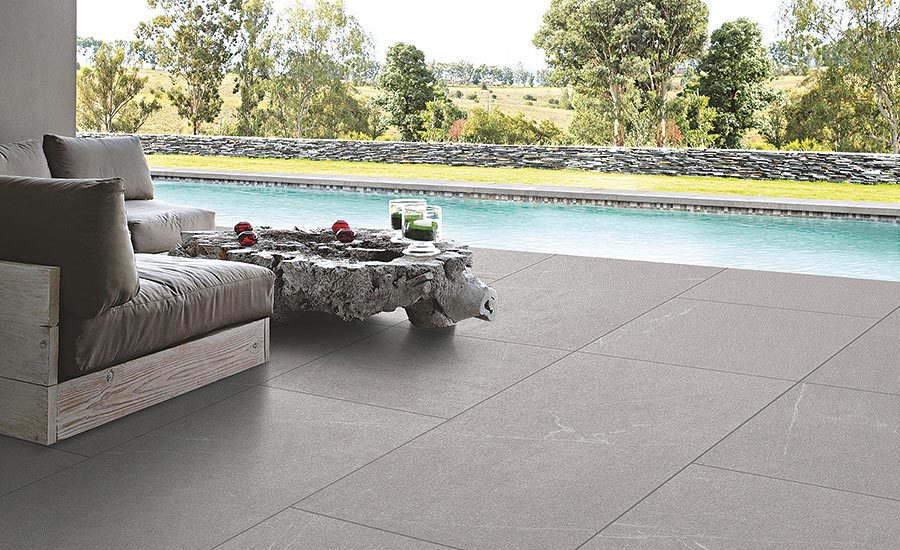Rough-textured matte porcelain is a great surface for high-traffic environments. It offers excellent non-slip properties and it’s very durable. But when it comes to cleaning, the high/low surfaces can test even the most thorough cleaning program. Poor cleaning can have a big impact on the floor’s aesthetic but, more importantly, a buildup of dirt and grime can create a slip hazard.
There are great cleaning products out there that can eliminate these issues. The problem is that while good cleaning chemicals are often specified initially, they are not always used going forwards. This may be due to cost implications, poor communication or time constraints, or a combination of these. Very often, cheaper inferior products are used and many of these add to the problem.
Multi-purpose or “non-specialist” cleaners, in particular, present a number of issues: Although porcelain is chemically resistant, very strong solutions may damage the surface. If the cleaner is hydrochloric-acid based, it could also damage any surrounding aluminium/steel trims and could be corrosive if the odors emitted enter air conditioning ducting – not to mention the potential harm to humans. Some cleaners also contain a wax maintainer; this will build up on the surface, tracking dirt, and the tiles will become more difficult to clean.
Specific cleaning methods can also be an issue. A mop won’t generally dig dirt out of a high/low surface; instead, it will just “snag” on the floor. Even tiles with a slight texture will be covered in undulations, which will collect dirt.
So how can you ensure a good maintenance program from day one? The first step is to clean tiles thoroughly, using a suitable cleaner, straight after installation. Very often, a mop laden with water is swishing over the surface at this stage. This spreads any grout and installation residues over the tiles. This layer of residue then becomes a key to dirt and grime; the floor becomes more difficult to clean and a poor maintenance cycle begins.
To safeguard a tile’s performance throughout its lifecycle, a thorough initial post construction clean and correct ongoing maintenance is crucial. (Attempting to remedy issues by applying treatments onto an existing/dirty surface will not work in the long-term.) If you prefer to use an acid-based cleaner, look out for a “buffered” acid which will give a thorough, fume-free clean, without the erosive issues associated with hydrochloric acid.
Although a sealant isn’t generally recommended or necessary, a protective barrier applied following a thorough initial clean offers a great alternative. For example, Filastop Dirt is an invisible barrier treatment that effectively fills the low spots of a textured or matt porcelain surface. This protects the areas that dirt can get trapped in, without affecting the tile’s coefficient of friction or creating a shiny effect. The product has an independent approval for the pendulum slip test and, once applied, the surface is easier to clean.
Going forward, use a specialist pH-neutral cleaner for daily cleaning and a specialist, alkaline-based deep cleaner, to remove any build-up of organic dirt as necessary. An alkaline cleaner can also be used to renovate tiles that haven’t been maintained properly, effectively turning back the clock so that a correct program can be put into place.
Use of the correct tools is really important too. Commercially, the use of a cleaning machine fitted with orange bristles will complement the cleaning product and will remove any grime that’s lodged in the tile’s low points.








